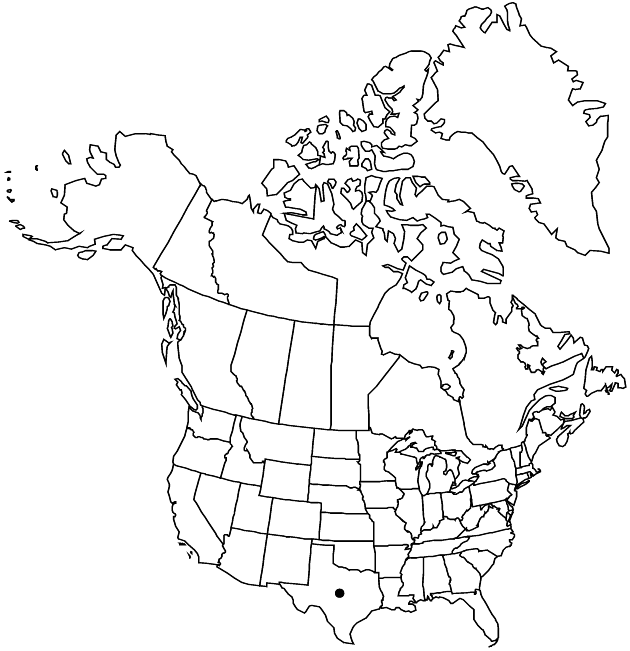Thymophylla micropoides
Sida 11: 377. 1986.
Basionym: Gnaphalopsis micropoides de Candolle in A. P. de Candolle and A. L. P. P. de Candolle, Prodr. 7: 258. 1838
Synonyms: Dyssodia micropoides (de Candolle) Loesener
Perennials, ashy white, to 15+ cm, arachnose to floccose. Stems spreading, often prostrate. Leaves mostly alternate; blades not lobed, spatulate, 10–25 × 3–6 mm, margins entire or toothed. Peduncles 0–5+ mm, tomentose. Calyculi of 3–5 linear bractlets, lengths 1/2+ phyllaries. Involucres obconic, 6–7 mm. Phyllaries 12–14, margins of outer distinct less than 1/5 their lengths, abaxial faces tomentose. Ray-florets 10–15; corollas bright-yellow, becoming greenish, laminae 5 × 3 mm. Disc-florets ca. 60; corollas yellow, 3 mm. Cypselae 2.3–3 mm; pappi of 5 erose scales to 1 mm alternating with 5 lanceolate, 1-aristate scales to 3 mm. 2n = 16.
Phenology: Flowering year round, following rains.
Habitat: Calcareous outcrops and derived soils
Elevation: 50–200+ m
Distribution

Tex., Mexico (Coahuila), Mexico (Nuevo León), Mexico (Tamaulipas)
Discussion
Selected References
None.
Lower Taxa
None.
... more about "Thymophylla micropoides"
tomentose +
introrse +
connate +
herbaceous +
scarious +
absent +
hirsute +
papillate +
continuous +
decurrent +
spatulate;not lobed +
winged;ribbed;winged;ribbed +
deltate;linear +
stigmatic +
20;50 +
absent +
zygomorphic +
3 cm30 mm <br />0.03 m <br /> (?) +
monomorphic +
dimorphic +
2.3mm;3mm +
staminate +
straight +
distinct +
proximal +
1;5 +
bisexual +
dispersed +
cylindric +
singly +
discoid +
indeterminate +
surrounding +
obconic +
alternate +
cauline +
distinct +
2-carpellate +
inferior +
attached +
anatropous +
alternating +
persistent +
falling +
absent +
tomentose +
tough +
thick +
absent +
connate +
persistent +
distinct +
falling +
unequal +
Sida +
1986 +
pistillate +
absent +
fertile +
epaleate +
convex +
fibrous +
distinct +
exalbuminous +
modifed +
1;2 +
alternate +
branched +
prostrate +
spreading +
2-branched +
papillate +
Thymophylla micropoides +
Thymophylla +
species +
cylindric +
shorter +
much longer +
ashy white +
perennial +